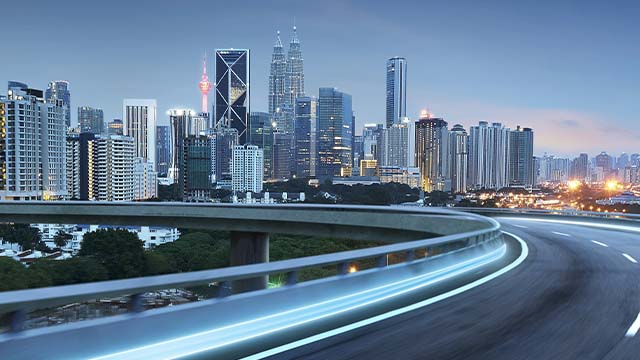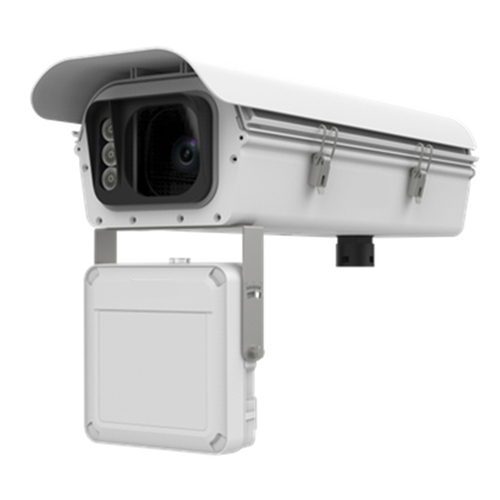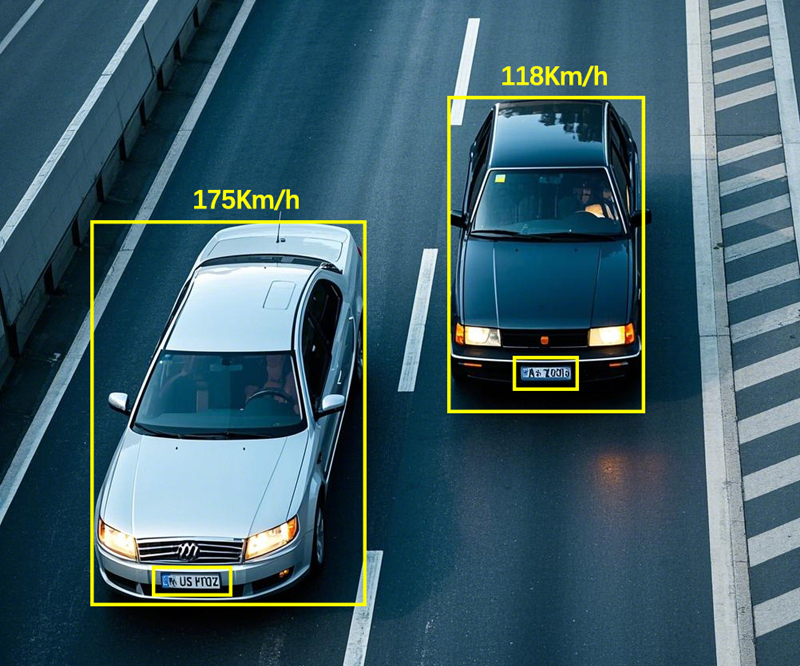How Do Speed Enforcement Cameras Perform at Night and in Inclement Weather?

In the modern traffic management system, speed enforcement cameras play a crucial and important role. They are one of the key devices for maintaining road order and ensuring driving safety. However, in complex environments such as at night and in inclement weather, the performance of speed enforcement cameras has drawn much attention. So, how exactly do speed enforcement cameras perform under these special conditions?
I. Technical Principles: How to Overcome the Hurdles of Darkness and Harsh Environments?
The ability of speed enforcement cameras to operate in complex environments lies in the close cooperation between sensor technology and algorithms. LiDAR is one of the important technologies. It works by emitting laser pulses and then accurately measuring the time of the reflected light, enabling millimeter – level accuracy in distance and speed calculations. The advantage of this technology is most evident in the absence of light at night. Even when the surrounding environment is pitch – black, LiDAR can accurately obtain vehicle – related data by virtue of the laser pulses it emits.
Doppler radar also plays a vital role. It captures vehicle movement information by utilizing changes in electromagnetic wave frequencies. In rainy and snowy weather, the advantage of Doppler radar becomes prominent. It can penetrate obstacles such as raindrops and snowflakes, providing stable and reliable data support for speed measurement.
In addition, the incorporation of infrared sensors further enhances the functionality of speed enforcement cameras. Short – Wave Infrared (SWIR) and Long – Wave Infrared (LWIR) sensors each have their own strengths. For example, SWIR can detect whether the road surface is icy in a thick fog environment, which is of great significance for preventing traffic accidents. LWIR, through thermal imaging technology, can clearly identify the outlines of pedestrians or animals, greatly improving the perception ability of speed enforcement cameras in complex environments.
In recent years, Multi – Sensor Fusion (MSF) technology has developed rapidly. This technology integrates the data collected by LiDAR, radar, cameras, and infrared devices. By using decision – level algorithms to filter out noise in the data, it constructs a high – precision vehicle trajectory model. Take the traffic sensor system of Shenzhen Hongchuang as an example. Through timestamp synchronization and spatial coordinate alignment technology, this system can accurately identify speeding vehicles even in scenarios with dense traffic on multiple lanes, providing a strong basis for traffic law enforcement.

II. Night – Time Law Enforcement: From Relying on Lighting to Achieving Full – Time Surveillance
In the past, traditional cameras had many limitations in night – time law enforcement. Due to insufficient lighting at night, traditional cameras often relied on fill lights or used long – exposure methods to obtain images. However, this led to new problems. For example, it was easy to produce motion blur, making the captured images blurry, or there would be noise, affecting the accurate identification of vehicle information.
Modern speed enforcement cameras, with the help of advanced technologies, have successfully overcome these bottlenecks. Take the VIDAR camera of Adaptive Recognition as an example. This camera is equipped with a 4D radar and has powerful functions. In a completely dark environment, it can not only track vehicles on multiple lanes but also synthesize clear license plate images in real – time, providing great convenience for night – time law enforcement.
When modern speed enforcement cameras are used for night – time law enforcement, there are the following key technical highlights:
Dynamic Metering Optimization: The camera uses spot metering mode. When shooting, it aligns the metering area with the high – brightness areas of the vehicle, such as the headlights. After locking the exposure parameters, it then adjusts the shooting composition, effectively avoiding image quality problems caused by overexposure or underexposure.
AI Noise Reduction Algorithm: Through machine learning technology, the camera can perform noise reduction on images taken at night. AI cameras deployed in Western Australia can capture violations with an accuracy rate of up to 98% even in low – light environments, fully demonstrating the significant effect of the AI noise reduction algorithm in improving license plate recognition rates.
Infrared Auxiliary Lighting: To ensure clear imaging at night without interfering with the normal driving of drivers, speed enforcement cameras actively emit invisible infrared light. Coupled with high – sensitivity sensors, this infrared light can generate grayscale images, ensuring the concealment of law enforcement work without causing visual interference to drivers.
Of course, early devices used for speed measurement, such as SLR cameras, had certain limitations in night – time law enforcement. For example, the brightness of their focus assist lights was insufficient, which might lead to focus failure and affect the shooting effect. Moreover, such devices were relatively large in size and not flexible enough during actual deployment, making it difficult to meet diverse law enforcement requirements. In contrast, handheld radar speed guns, with their portability and real – time printing function, have become powerful tools for night – time mobile law enforcement.
III. Inclement Weather: From Difficulty in Normal Operation to Reliable Law Enforcement
In the past, inclement weather such as rain, snow, and thick fog was regarded as the “nemesis” of speed measurement law enforcement, posing great challenges to the normal operation of speed enforcement cameras. However, with the continuous progress of technology, these problems are gradually being solved.
Rain and Snow Environment
In rainy and snowy weather, millimeter – wave radar can still operate stably in heavy rain due to its strong penetration ability. In contrast, LiDAR may experience measurement errors due to the scattering effect of raindrops.
Gated Near – Infrared (NIR) imaging technology provides an effective solution to the imaging problem in rainy and snowy weather. By precisely controlling the time of the light source pulse, it can filter out the noise generated by the reflection of rain and snow, significantly improving the image clarity. According to actual measurement data in Sweden, the speed measurement system integrated with NIR technology has a 40% higher detection accuracy in heavy rain than traditional cameras. This data fully demonstrates the advantages of this technology in inclement weather.
Dense Fog and Dust Environment
Thermal imaging technology (LWIR) plays an important role in dense fog and dust environments. It uses the thermal radiation of objects themselves for imaging, so it can penetrate the haze and clearly identify the outlines of vehicles. In Washington State, USA, LWIR cameras were deployed in foggy days with a visibility of less than 50 meters. As a result, the accident rate in this area decreased by 27%, indicating that thermal imaging technology has a significant effect on improving road safety in foggy days.
In addition, a research team in Northern Europe proposed a data fusion strategy called “Adaptive Depth Fusion Network”. When faced with situations of asymmetric distortion of sensor data, such as the failure of LiDAR but the normal operation of radar in foggy days, this network can dynamically adjust the weights of the input data of each sensor according to the actual situation, thereby maintaining the reliability of speed measurement law enforcement.
Extreme Cold and Icy Environment
In extreme cold and icy environments, speed enforcement cameras need to have special designs to operate normally. First, the device must pass a wide – temperature test from – 30°C to 70°C to ensure stable operation under different temperature conditions. At the same time, to prevent the lens from frosting and affecting the shooting effect, cameras usually use anti – freeze coatings. For example, the fixed – type speed enforcement cameras in Chicago can still operate continuously in heavy snow, thanks to their built – in heating modules and redundant power supply designs, which ensure the normal operation of the cameras in harsh cold environments.
IV. Global Practices: Technology Application and Effect Verification
Speed enforcement camera technology has been widely applied around the world and has achieved remarkable results.
Maryland, USA: AI cameras were deployed in school zones, which increased the night – time speeding capture rate by 60%. In addition, this system integrates big data technology, which can predict high – risk road sections and take corresponding traffic management measures in advance, effectively ensuring the road safety around schools.
Western Australia: The AI system launched in 2025 is very powerful. It can not only detect vehicle speeding simultaneously but also monitor whether drivers are not wearing seat belts and whether they are using mobile phones while driving. In foggy environments, the false alarm rate of this system is less than 2%, fully demonstrating its high – precision law enforcement ability in inclement weather.
EU’s “Vision Zero”: Sweden actively responded to the EU’s “Vision Zero” initiative. By using 4D radar and super – resolution imaging technology, it achieved full – time monitoring of multiple lanes. In rainy and snowy weather, this technology combination increased law enforcement efficiency by 35%, making an important contribution to reducing traffic accidents and ensuring road safety.
Shenzhen, China: The multi – sensor fusion system adopted in Shenzhen performed outstandingly during the typhoon season. Through the complementary advantages of LiDAR and millimeter – wave radar, this system reduced the mis – shooting rate to less than 0.5%, providing accurate and reliable data support for local traffic law enforcement.

V. Future Trends: From Single Law Enforcement to a Smart Ecosystem
With the continuous development of technology, speed enforcement camera technology is also evolving. In the future, it will develop towards a smart ecosystem.
Vehicle – to – Infrastructure (V2I): In future traffic scenarios, autonomous vehicles will communicate with speed enforcement cameras in real – time. When a vehicle is about to speed, the speed enforcement camera can send a warning message to the vehicle in advance, reducing human intervention and further enhancing road safety.
Edge Computing and 5G: With the help of edge computing technology, speed enforcement cameras can process the collected data locally, greatly shortening the response time. A pilot project in the Netherlands shows that by using edge computing and 5G technology, the delay in speeding determination has been compressed from the original 2 seconds to 200 milliseconds, greatly improving law enforcement efficiency.
Balancing Ethics and Privacy: In the process of widely applying speed enforcement camera technology, how to balance the issues of ethics and privacy has received much attention. Currently, many countries and regions have taken a series of measures. For example, license plate information is anonymized, and the data storage period is limited. The EU’s GDPR has relevant and clear requirements in this regard to alleviate public concerns about “excessive surveillance”.
